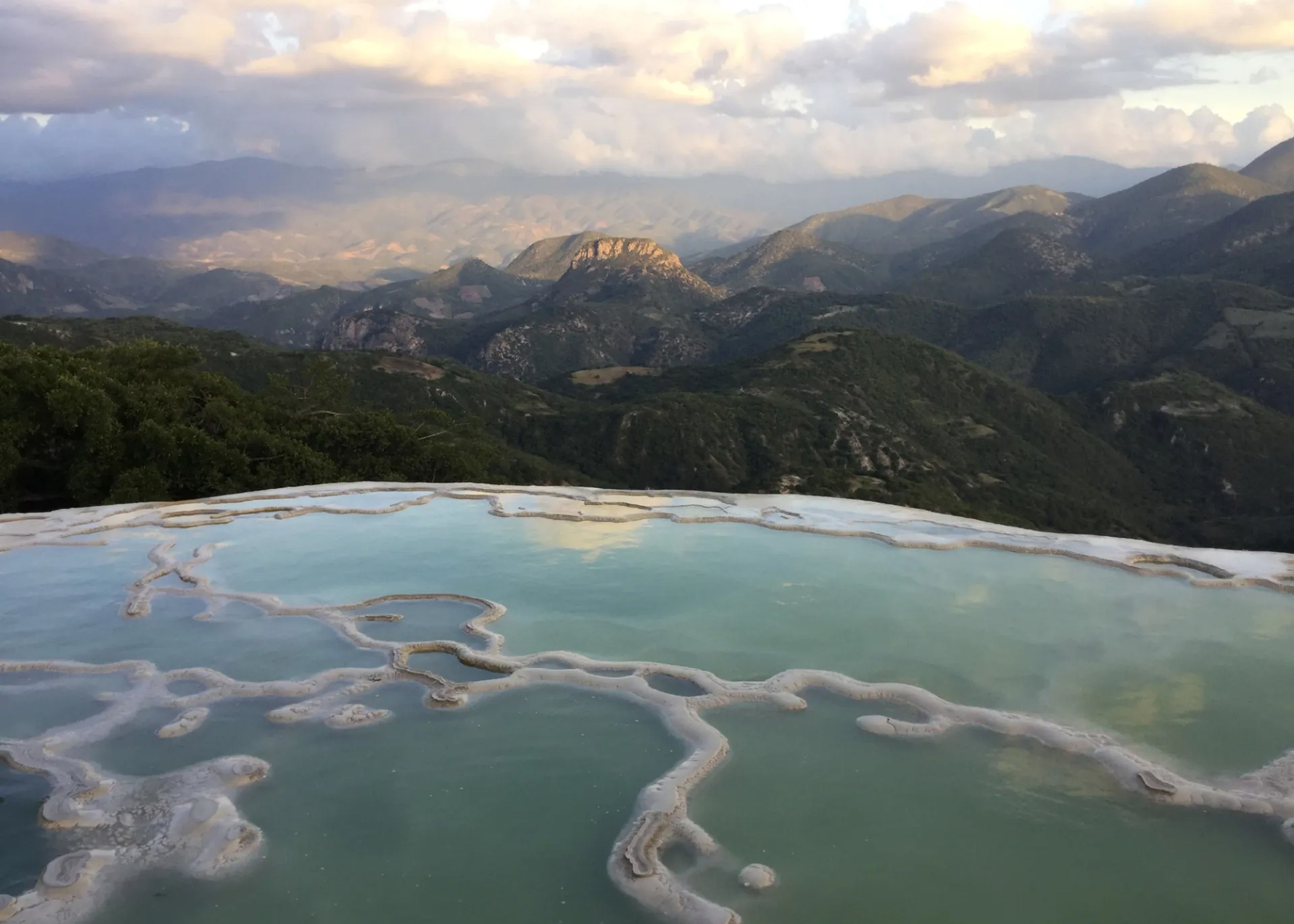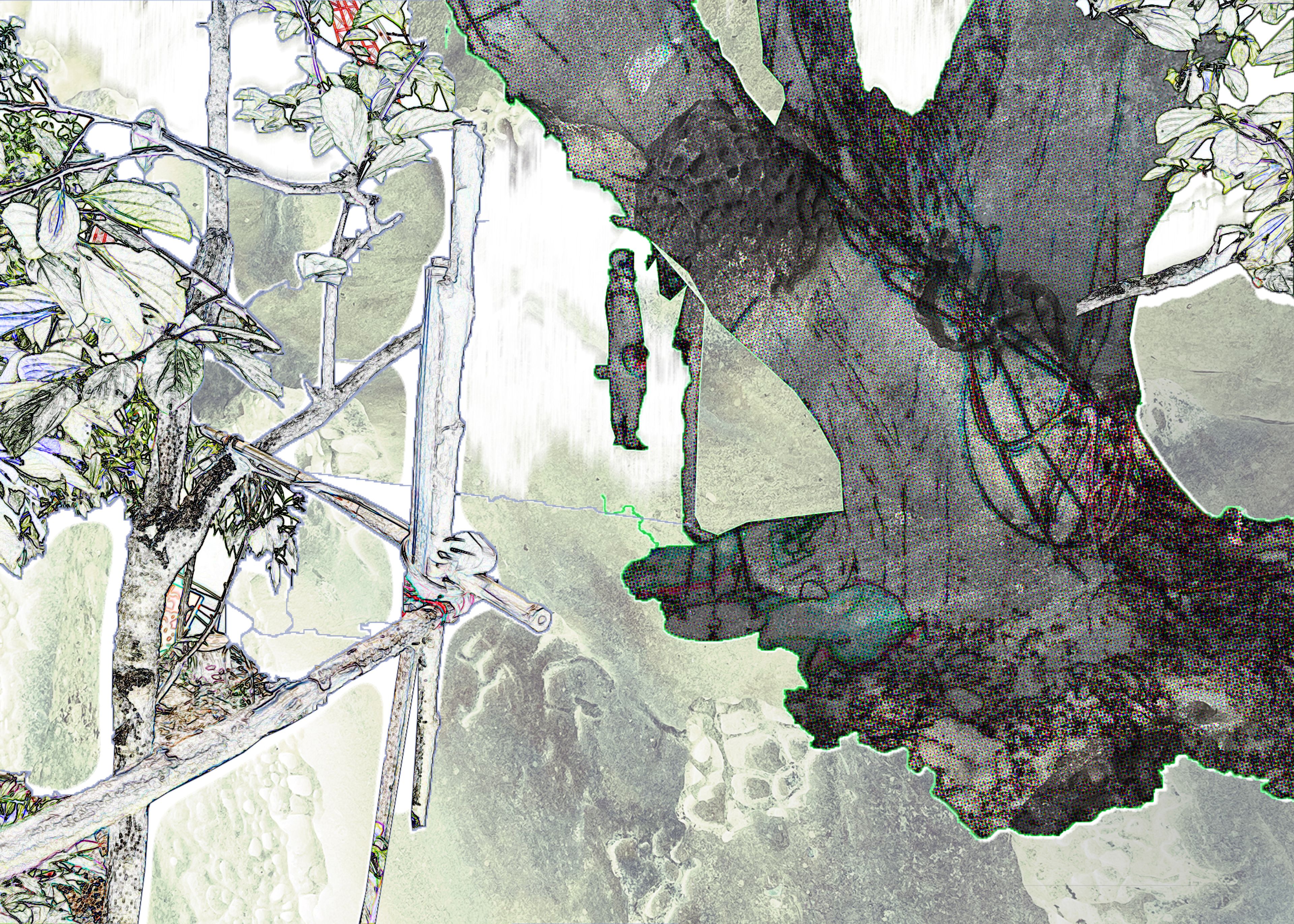
Cyclical Time as Antidote
By Alice Yuan Zhang
After the unusually torrential rains this year, a friend and I went for a walk by the concrete channel. To call it a river is to reference past glory; since the flood of 1938, 1 the Los Angeles waterway has been confined to a strict 51 mile trickle. I have always seen waste matter scattered among its habitat of willows and shrubs, but this time a great sprawl of moss blanketed the miscellaneous mess. The dried-up threads wove tightly around bits of clothing, packaging, tarp, containers, some steel frame, a merchandise security tag, and what mostly remained uncategorizable upon closer inspection.
Moss has been around for 450 million years. As the oldest land plant, it is well-rehearsed in recycling nutrients, preventing erosion, and purifying water. But unlike the boundaries between natural forms of life that have been permeable for most of history, it must find the standstill of this stubborn river knot to be quite unfamiliar to work with. My walking companion observed each morsel to be residing in mere “adjacency” alongside the next. Though in close proximity, these metals, plastics, and manufactured goods have all journeyed from faraway places and timescales only to become fragments, no longer able to re-relate as an ecosystemic whole.

Adjacency has become the pervasive aftermath of our species’ race along the violent arrow of progress. Whole webs of living relations are scattered and upended in globalization’s wake. Economic stability depends on insatiability. Needs are irrelevant; with digital media, consumer behavior is not only predictable but algorithmically shapeable to the whims of capital. Like cells in a cancerous body, workers produce and consume tirelessly only to find our very selves lodged into sterile knots—in traffic, at work, on the street, across online feeds, against disparate politics, between our dream worlds and lived realities.
There is no beginning or end to this coagulation, and no easy culprit to protest. What remains is a balancing act. Here we can take a cue from the millenia-old practice of acupuncture, which is based on the teaching that qi 2, or vital energy, flows in our human bodies as well as across all planetary forms. Illness manifests when this flow is not properly maintained, and like all wealths, it is possible to have excess qi, as well as not enough. With this lens, we can trace the challenge at hand through meridians across the ecosystemic body, from moss to metal, along the fault lines of supply chains and beneath the underbelly of modern infrastructures.
Adjacency has become the pervasive aftermath of our species’ race along the violent arrow of progress. Whole webs of living relations are scattered and upended in globalization’s wake.
What facilitates the flow of life energy? Capitalist ontology counts progress by the measure of linear time. Temporal politics shape planetary relations. Mining as an industry operates on stolen time, extracting from centuries-deep sediment and the labor of oppressed bodies to afford the near-term energy demands of distant populations. Sick and elderly people, though laden with skills of how to live otherwise, are cast aside into nursing facilities in a society that normalizes speed at all cost. Prototypes overshadow the inevitability of everyday maintenance, while waste streams are swept out to sea or to less fortunate lands. Progress trades everything that has ever existed into the mirage of a singular utopia. How have we come to believe that this particular “future” is possible, or even desirable?
If the logic of the clock is indeed unconducive to socioecological wellbeing, what are other more life-affirming choreographies to thaw into? In Daoist understanding, matter and energy transform endlessly into one another. Life is defined not by a finite span of time but by the ability to decay and grow and decay again. Through harvests, migrations, myths and rituals, ancestors have long navigated time as more rhythm than increment. An ancient council of the sun and seasons bears witness, then and now, to creature bodies metabolizing into each other across intertwined generations. Facing the climate-scale symptoms of what Karl Marx calls a metabolic disturbance, might reacquainting with cyclical natures be the ultimate prerequisite for livability?


The ecosystemic body is stuck with the weight of everything that has expired beyond its human-centric shelf life. This concerns our approach with technology, which Ursula K. Le Guin defines simply as "how we interface with the material world.” 3 Planned obsolescence has designed digital equipment to serve a handful of operating system updates, only to wind up as toxic matter with no prospect of decomposing in a million years. Consider instead the technology of baskets, the earliest of which have long decayed so many times over that it’s hard for archaeologists to even date when the first was ever made. Meanwhile, the practice of weaving continues to be carried out across present-day cultures. A basket may temporarily emerge into useful form for its weaver, but afterward it carries on, breaking and morphing to serve other “usefulnesses” across the ecosystem. When the cyclical clock strikes midnight, disintegration becomes reintegration, and death transforms into life anew.
Today’s knots resist the neat dichotomy of natural or artificial. Rather, they await our help in shapeshifting onward. We can become doulas, learning the skills and patience to revitalize everything from bikes and electronics to land lots and friendships. We can also learn strategies and persistence to induce the decay of institutions, ideologies, and control mechanisms that hinder the flow of planetary qi. The challenge is not only material; in the digital age, information networks shape the speed, sentiment, legibility, and executability of data flows that bear foundational implications across the physical realm. Linking code and content as consequential to action, social scientist and cybernetician Gregory Bateson looks for “switches”—levers in time that make alternate flows possible. 4 If all the world is process, can we move with nuance and intention to invite homeostasis across matter, energy, information and, indeed, ourselves?

We do not need to begin anew. Among the many cyclical technologies available to us, breath is foundational. Breath grounds us, slowing the heartbeat and clearing the mind. The renowned Zen monk Shunryu Suzuki observes: “We say ‘inner world’ or ‘outer world’ but actually there is just one whole world. In this limitless world, our throat is like a swinging door.” 5 On inhale, we surrender to all that air contains and come alive. On exhale, we fall again into nothingness. This door connects us to many pasts and futures, and it is open for as long as we are alive.
Alice Yuan Zhang is a migrating media artist and researcher.